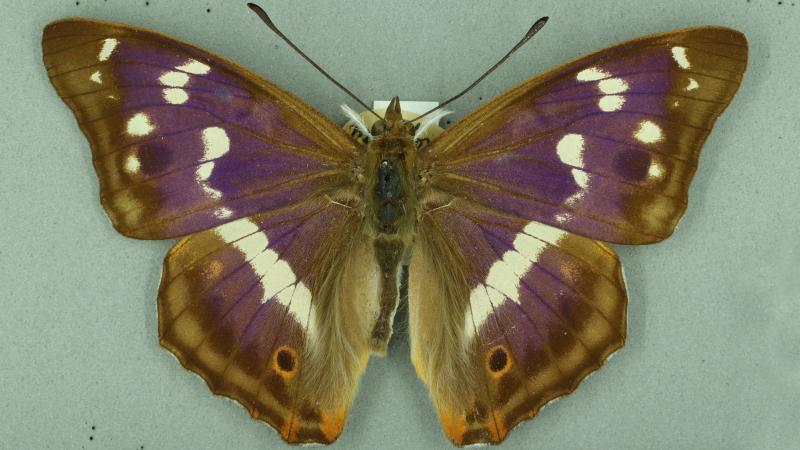
Pictured: purple emperor, Apatura iris
200-year trend in Cambridgeshire: Increase (after recently rebounding from a period of decline).
Modern records
The record from Jenyns shows that although present in his time, the purple emperor was scarce and rarely seen. It is thought to have gone extinct from Cambridgeshire’s woods in the mid-1900s. However, in recent years colonies have been found at many sites, with the species popping up almost anywhere that a decent sized patch of ancient woodland is found. This seems to be part of a national increase, possibly caused by a combination of reduced woodland management (sallow is their foodplant and it is not a desirable commercial species), and climate change (the purple emperor used to need very specific parts of a sallow in warm sunny aspects to get the caterpillars through a generation but now it seems any sallow will do).
As a spectacular species beloved by collectors, it is unlikely that the purple emperor was particularly overlooked as may be the case for the smaller purple hairstreak. Furthermore, sites where it has been recorded in the most recent decade were heavily monitored for the previous 30+ years with no records, indicating genuine colonisation. Therefore, after a period of loss, a resurgence means the purple emperor may now be surpassing the kind of numbers seen 200 years ago.





